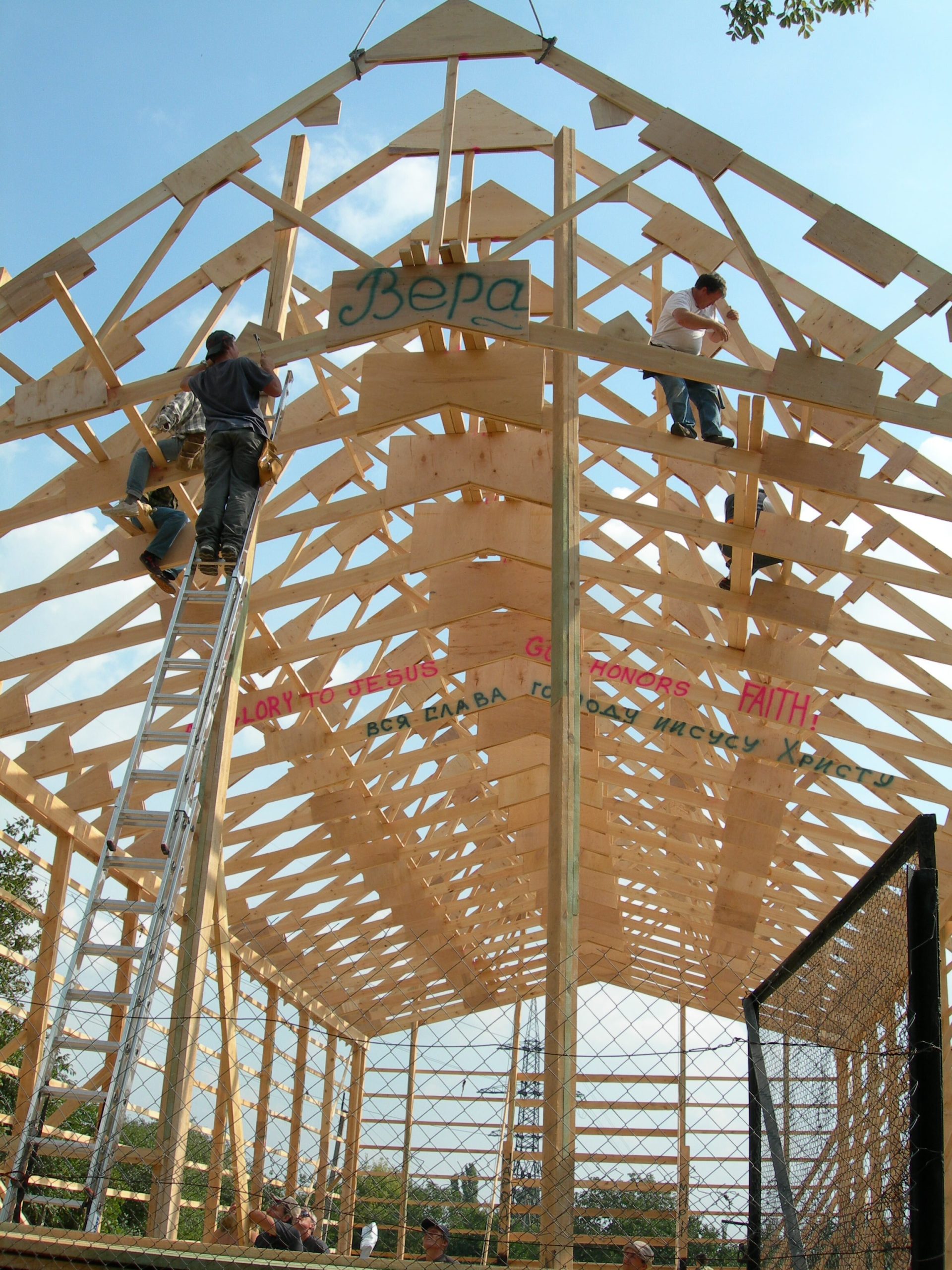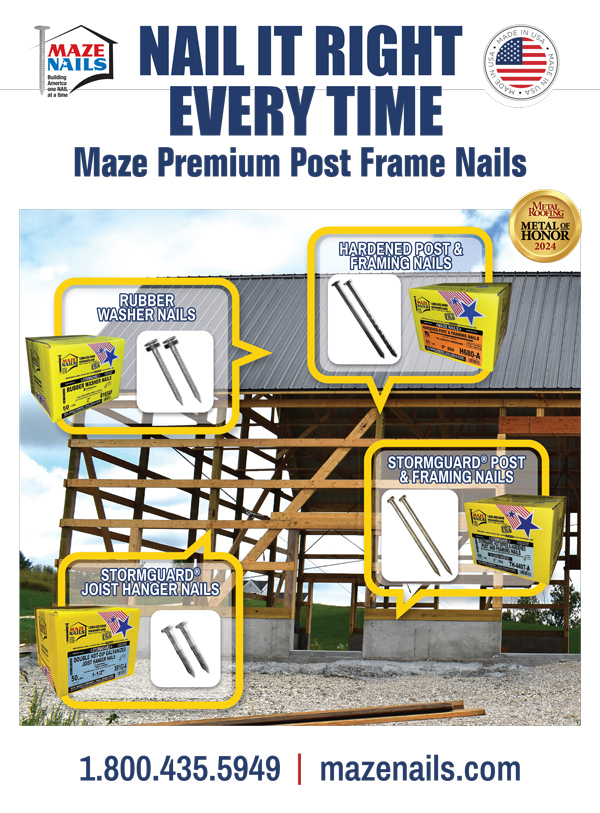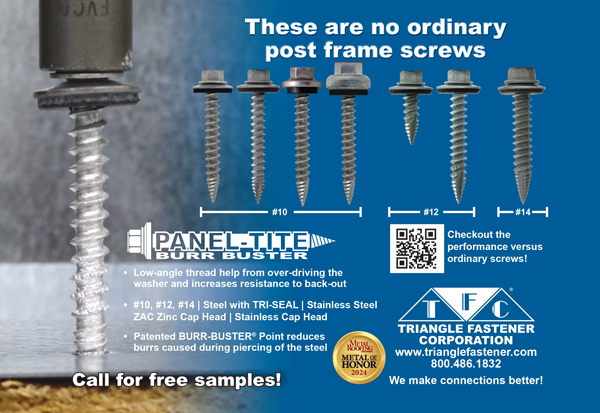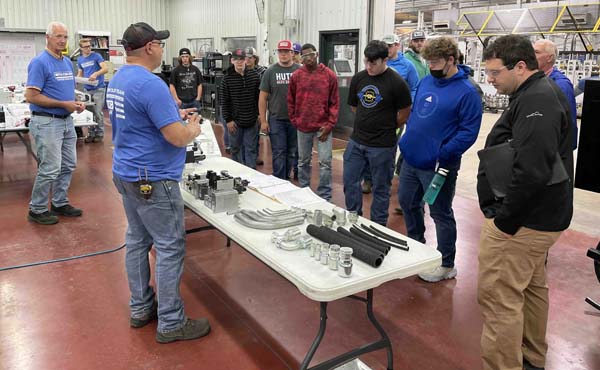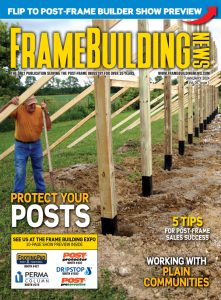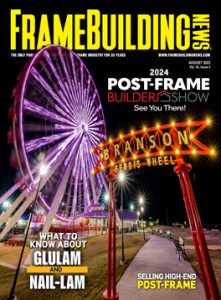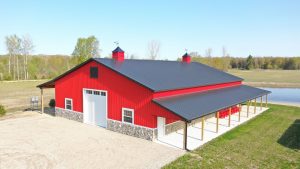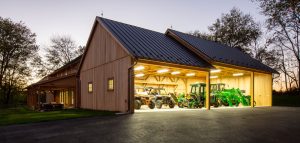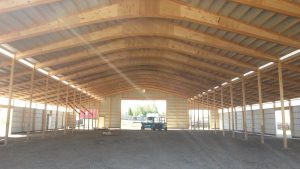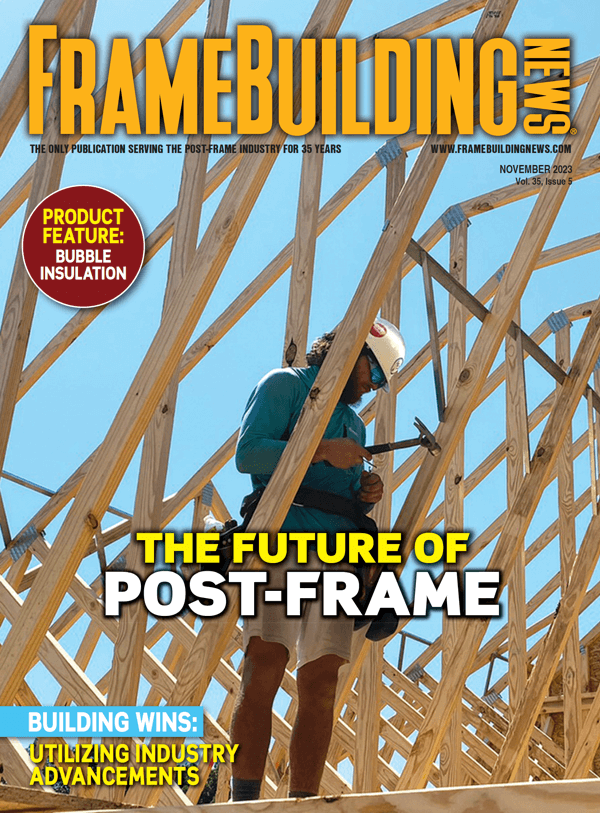by Karen Knapstein
Post-frame construction has a firm foothold in the United States. In Europe, not so much. But post-frame proponents like Dwayne Borkholder, of Borkholder Building & Supply, have been working to change that.
The building tradition in Eastern Europe is in brick and steel. The buildings last for centuries, but the tradeoff is they take a lot of money, labor and time to build. By comparison, post-frame structures involve a fraction of these assets. While a post-frame structure isn’t as strong as brick or steel, Dwayne said, “As long as you’ve got a good finish, you’re going to still produce a good structural product.”

Eastern European Post-Frame Building
Dwayne became active in the Eastern European post-frame building initiative about 16 years ago. He teamed up with International Networx [internationalnetworx.org], who helped facilitate more than 30 projects that have been built so far. International Networx’ Becky Ruland would organize and facilitate the necessary people, logistics, working with churches, getting food, and helping them understand what’s needed. Dwayne would bring building crews and would tag on one or two local people to each crew so they could learn the building process. “Sometimes there was an interpreter,” he said, “but we were training as we were going along.
“We’ve built structures – churches, a mission outreach center, pastors’ houses, a camp – if you look at those examples you see that they’re going to be able to rebuild faster and easier. They have the wood resources to do it. They just haven’t developed the industry.”
Of the International Networx-Borkholder projects, 24 were built in Ukraine. Ukrainian Pasha Kakuran was Dwayne’s on-location “understudy and protégé.”
“After the second build,” Dwayne recalled, “Pasha really took over the projects. He had good AutoCad skills and he actually then would meet with pastors – especially if the customer was a church – and figure out what they wanted. He would draw it up and email designs over here [to Borkholder]. We’d look at it and add structural comments. He would make the changes and then he would material list it and we would review.” Pasha would order the lumber and steel. “Then he had three guys working for him, and they would show up at the build site and they would build the trusses and laminated posts, and they would erect the building.”
Gaining Momentum
Locals were impressed with how quickly post-frame buildings can be put into service. When the first church went up, “the first pastor said they would have expected it to take five to seven years to get the exterior shell up,” said Dwayne. “They would go buy brick in an amount and then lay that brick. Then they’d save money to do it again. The last thing to go on is the roof.”
Building the traditional way, “you can’t use it till the roof is on,” he explained. Versus post-frame building, when you can use it much sooner: “You set the posts, put on the girts and set the trusses, and immediately you start drying it in. In another week or so, you have a building you can use in at least some degree … even in its rough form it can be utilized. Those were the big aha moments for Ukrainians. It’s much cheaper and you can start using it before it’s finished.”

Once the first post-frame church went up, it drew a lot of attention. “I think within the first two years of that first church going up,” Dwayne recalled, “they had 120 church groups come and look at it.”
Another big thing to consider is concrete and steel are controlled building products, Dwayne pointed out. So if the government wants to monitor and control who builds what, they can control whether or not a church goes up in a given area. Post-frame creates a loophole: “A wood structure is considered residential, so they could add on to their house and put a [post-frame] church building right beside it.”
Borkholder operated for eight or nine years in Eastern Europe before the political climate shut them down. “It was very exciting for a while,” Dwayne said. “Then the governments changed; about six or seven years ago a pro-Russian president took over. All of a sudden small businesses were being fined and shut down. So we took our website down and really kind of stopped operations [over there]. Guys on the crews all got other jobs. But Pasha stayed involved with [Borkholder] to some degree.”
After the Fact
In fact, Pasha and his family were in Argentina working on an International Networx project when Russia invaded Ukraine in February. They are currently living with Dwayne in Indiana. So now, along with the rest of the world, they watch in horror as Russia continues its attacks on Ukraine.
Dwayne shared his goals for building in Eastern Europe: “My goal and mission were to go and not just ship and import lumber and supplies, but to help them create an industry from within,” he said. He liked Habitat for Humanity’s model of other people getting hands-on learning with a build.
It was important that the materials be on the jobsite when the Borkholder team arrived. Manpower was also lined up ahead of time. “We told churches: ‘If you’re going to want to do something like this in the future – or if you want to help another church – you need to send at least two or three of your men for that week to be able to help and to experience the building process.’ Because we do need help; we’re doing a lot of things by hand over there.”
To build momentum for post-frame, more than men who are willing to swing a hammer are needed. “You need people on the ground with an investment or people here with an investment to take it to the next level,” he said. When the dust settles, and as humanitarian aid filters in, there’s opportunity to rebuild with post-frame.
Homes, churches, clinics, schools – how much will need to be rebuilt is astounding. “Take houses for example,” said Dwayne, “look at the devastation where they’ve leveled entire areas. Post-frame is as good an option as any to rebuild.

“Also, there are a lot of Ukrainians coming to the U.S. You may have people in your own community. Keep your eyes and ears open – there are going to be people who need assistance. And not just our resources, but our skills to teach them. We could only teach and train so many people over there.
“It’s been very rewarding to be able to go and connect with people,” he continued. “Maybe one of the biggest impacts on me: There was an older gentleman who had moved from somewhere in Russia. During the second church build, he asked through an interpreter, ‘Why would you come and help people who you have no idea who they are?’ I told him, ‘Because as part of a Christian family, you’re my brother.’ He cried; he said, ‘I’ve never seen or heard this before – that people would do this.’
“There’s that whole personal connection. You can send money, but there’s a whole different impact if you work side by side with somebody.” FBN


